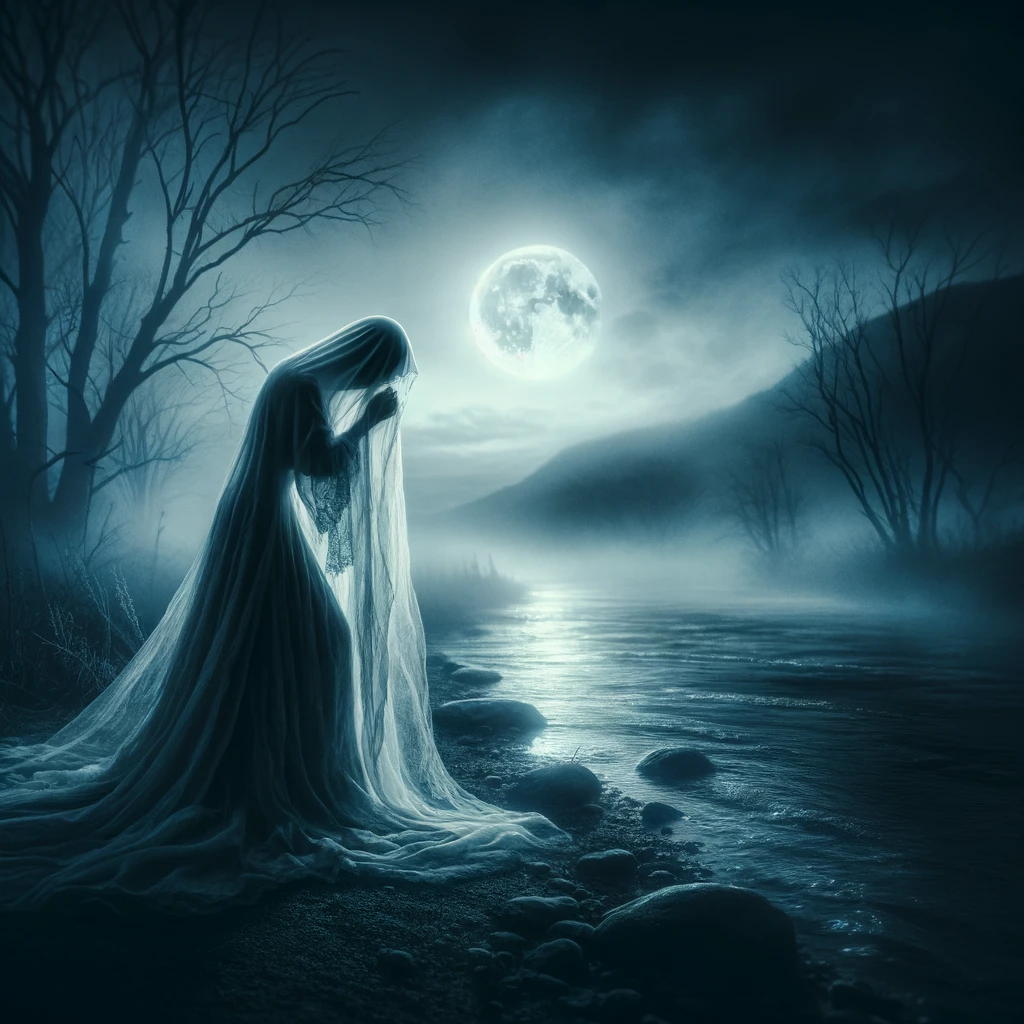The legend of La Llorona, or “The Weeping Woman,” is a poignant and haunting story that has permeated Latin American folklore for centuries, transcending regional boundaries to become a staple of cultural heritage across the Spanish-speaking world. This ghostly tale, woven with themes of love, tragedy, and remorse, serves as a cautionary tale that has been passed down through generations, evolving with each telling.
Origins of the Legend
The roots of La Llorona can be traced back to the pre-colonial era, where stories of weeping female spirits were prevalent among Indigenous cultures in Mexico. However, the most recognized version of the legend emerged during the colonial period, blending Indigenous myths with Spanish influences, encapsulating the cultural amalgamation of the era.
According to the most popular rendition, La Llorona was once a beautiful woman named Maria who lived in a rural village. She fell deeply in love with a wealthy nobleman, with whom she bore two children. However, her happiness was short-lived. When the nobleman decided to marry another woman of his status, Maria, driven by a fit of jealous rage and despair, drowned their children in a river. Immediately regretting her actions, she drowned herself but was condemned to wander the earth as a ghost, eternally searching for her children.
The Legend’s Evolution and Cultural Significance
Over the years, La Llorona has become more than just a story to scare children into obedience; it reflects deeper societal and cultural themes. The tale has been interpreted as a metaphor for the loss of Indigenous culture following the conquest and colonization by the Spanish, represented by Maria’s betrayal and the subsequent destruction of her own lineage.
The legend also explores themes of maternal love and the societal expectations placed on women, as Maria’s identity and fate are irrevocably tied to her relationships and actions within the confines of patriarchal norms. La Llorona’s eternal weeping is seen as an expression of not just personal regret but also a mourning for lost culture, identity, and autonomy.
La Llorona in Popular Culture
La Llorona has transcended its folkloric roots to become a figure in popular culture, appearing in literature, films, and music throughout Latin America and beyond. Each adaptation adds layers to the story, reflecting contemporary issues and the evolving societal context. From horror films that capitalize on the eerie aspects of the legend to literary works that explore its psychological and cultural dimensions, La Llorona continues to fascinate and inspire creativity.
In cinema, La Llorona has been depicted in various forms, from a vengeful spirit seeking justice to a tragic figure symbolizing the consequences of societal and personal failings. These adaptations often incorporate elements of Gothic horror, melding the supernatural with psychological depth to explore the complexities of the legend.

The legend of La Llorona is a rich tapestry of cultural, historical, and emotional threads, embodying the universal themes of love, loss, and redemption. It serves as a reminder of the past, a reflection of societal norms and challenges, and a testament to the enduring power of storytelling. As long as stories are told, La Llorona will continue to roam the rivers and valleys, weeping for her children and for all that has been lost in the flow of time.
